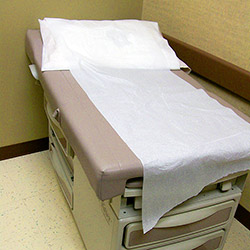You should read this if you recently had a dental bridge placed or are considering one! One or more missing teeth can be replaced with a custom-made dental bridge. However, to keep your bridge in top shape, routine maintenance is required.
Let’s look at what a dental bridge is, who needs one, and—most importantly—expertly supported tips on how to maintain your dental bridge for many years to come.
What is a Dental Bridge?
A dental bridge is a restorative dentistry process that fills in the space created by one or more lost teeth. Usually, it includes:
- Artificial teeth that bridge the gap.
- Crowns: To secure the bridge, crowns are affixed to nearby healthy teeth or implants.
For those who want a long-lasting, natural-looking solution and have lost teeth as a result of gum disease or decay, this restorative procedure is perfect. Dental bridges provide more stability and are less removable than dentures.
Who should Consider a Dental Bridge?
A dental bridge could be a good option for people:
- With one or more consecutive teeth missing.
- Facing trouble speaking or chewing because of missing teeth.
- Observed their face drooping or their neighboring teeth moving.
In addition to restoring smiles, a dental bridge stops neighboring teeth from moving, which over time may cause misalignment, problems with your bite, and even jaw pain.
Benefits of a Dental Bridge
Dental bridges are crucial to your overall oral health and do more than just close gaps in your teeth. They assist in the following ways:
1. Restore your natural smile and confidence
A dental bridge restores the full appearance of your smile by filling the gap left by a missing tooth. You may feel more comfortable speaking, laughing, or taking pictures as a result.
2. Make eating and speaking easier
Your ability to pronounce words and chew food may be impacted by missing teeth. With the aid of a dental bridge, you can regain these daily abilities and speak and eat more comfortably.
3. Maintain the shape of your face
Your facial muscles may begin to sag when you lose teeth, giving you an aged appearance. A dental bridge keeps your face looking younger by supporting its structure.
4. Stop teeth from shifting
Teeth next to a gap often start to move out of place. A bridge keeps your other teeth in line by filling the space and preventing unwanted movement.
5. Even out the pressure when you bite
When you chew, the pressure on your remaining teeth may increase if you lose a tooth. By more evenly distributing the bite forces, a bridge helps shield your natural teeth from damage.
Despite the numerous advantages of a dental bridge, proper maintenance is still necessary. Your bridge can remain sturdy and comfortable for many years with the right care.
Expert Tips to Care for Your Dental Bridge
1. Brush Twice Daily with a Soft-Bristled Toothbrush
The first line of defence for keeping your dental bridge in good condition is practicing good oral hygiene. Use non-abrasive fluoride toothpaste to brush your teeth and bridge twice a day. To clean the bridge’s surface and edges without causing any harm to the material or causing irritation to the gums, use soft, circular motions.
Pro Tip: Electric toothbrushes can remove plaque more effectively, particularly in the area surrounding the abutments.
2. Floss Carefully Using Special Tools
Traditional floss may not reach under the pontics of a dental bridge. Instead, use:
- Floss threaders
- Super floss
- Interdental brushes
These tools allow you to clean under your bridge and between your natural teeth, preventing plaque and food buildup that can lead to gum disease.
3. Rinse with Fluoride Mouthwash
A daily rinse with an alcohol-free fluoride mouthwash strengthens enamel, protects against cavities, and reduces bacteria around the bridge and abutment teeth. This is especially important since bridges can make some areas harder to clean.
4. Avoid Hard, Sticky, and Extremely Cold Foods
Even though dental bridges are durable, they can be damaged by habits like chewing ice, biting hard candy, or eating very sticky foods like caramel. These actions can crack the bridge or loosen the supporting abutments.
Diet tip: Stick to soft foods for the first few days after placement, then gradually introduce firmer textures.
5. Eat a balanced diet
The food you eat also feeds your smile! In addition to supporting your natural teeth and dental bridge, a diet rich in calcium, vitamin C, and vitamin A also keeps your gums healthy.
But too much sugar and those tempting acidic drinks can damage the teeth that support your bridge.
6. Schedule regular dental visits
Maintaining the best possible condition of your dental bridge and surrounding teeth requires professional cleanings and examinations every six months. In addition to doing a deep cleaning in places your brush cannot reach, your dentist will examine your teeth for indications of decay, gum disease, or bridge damage.
Pro Tip: To prevent more issues, see your dentist right away if you feel like your bite has changed or if the bridge feels loose.
Takeaway
A dental bridge is more than just a cosmetic fix; it is a necessary component of your oral health. Your bridge may last ten to fifteen years, or even longer, with proper maintenance and routine dental examinations.
If you’re missing teeth and want a reliable, natural-looking replacement, a dental bridge might be the best option. For more information or to schedule a consultation with Dr. Sadineni at Dublin Metro Dental, call us at (614)766 5600. Your confident, healthy smile is waiting for you!























